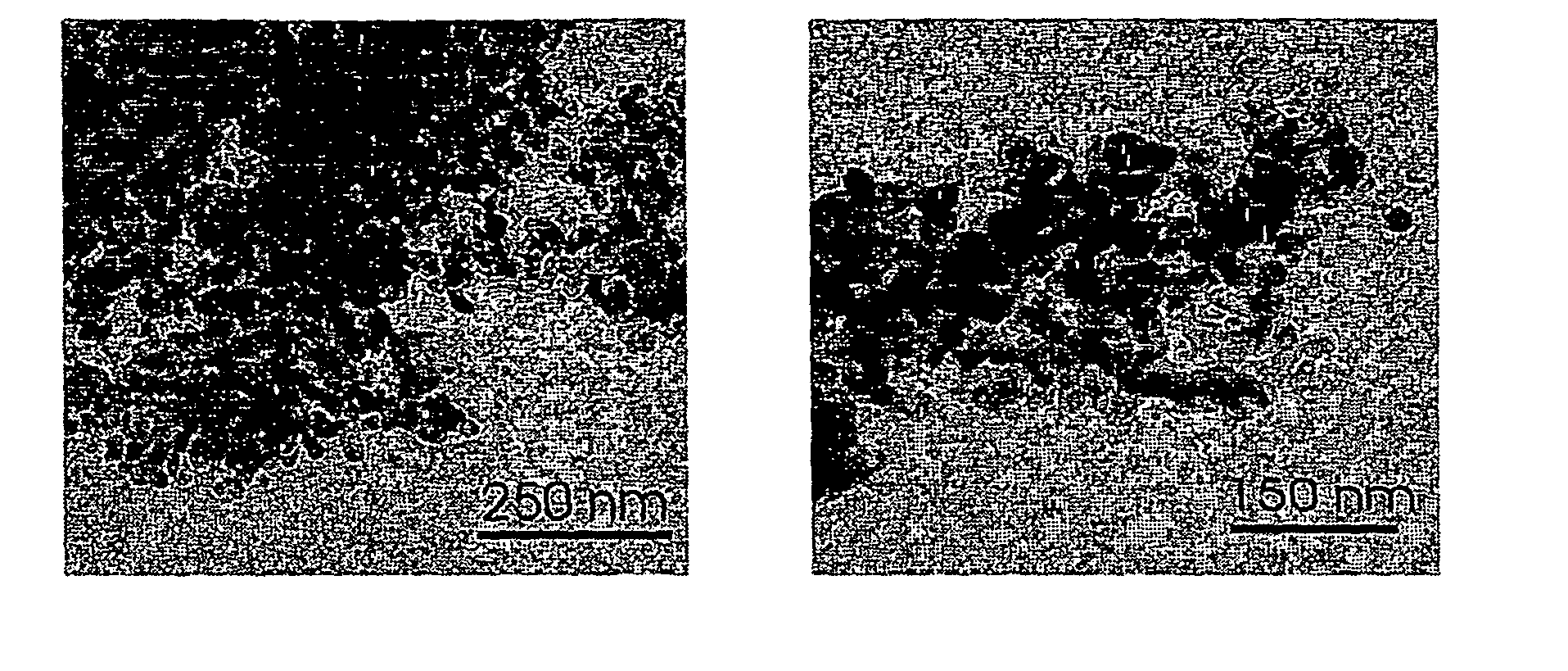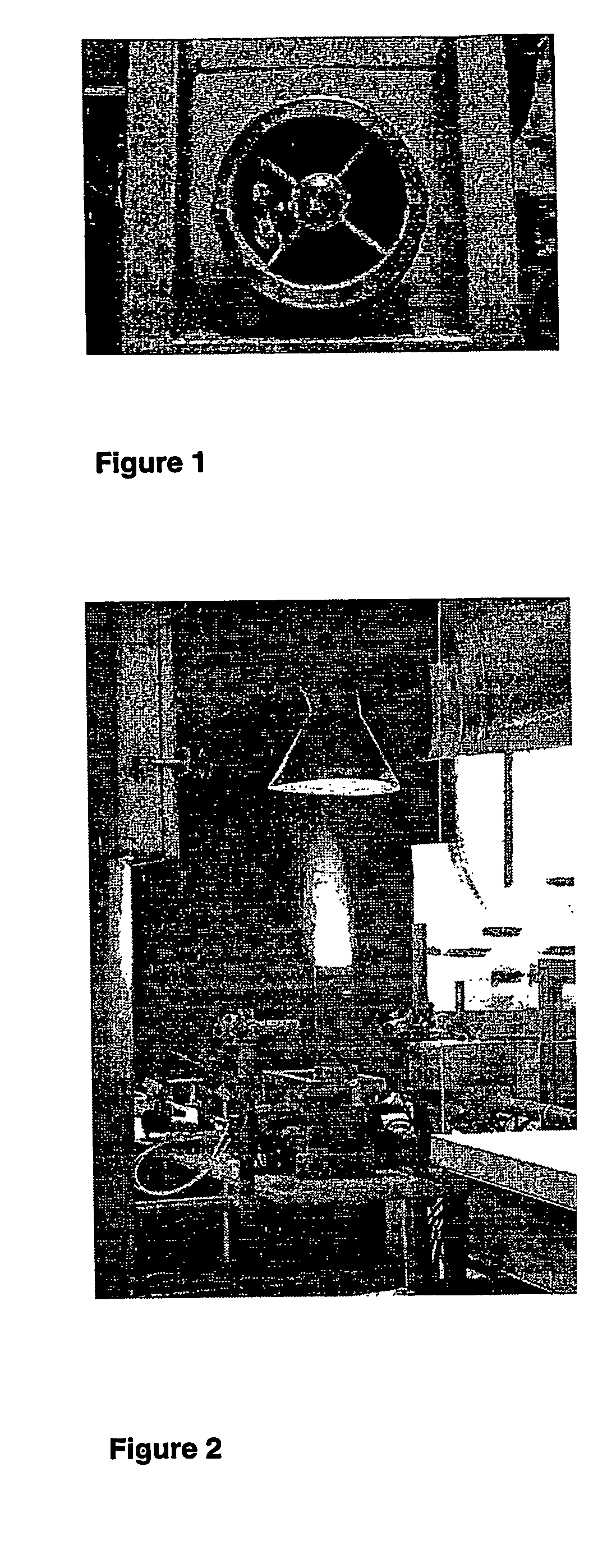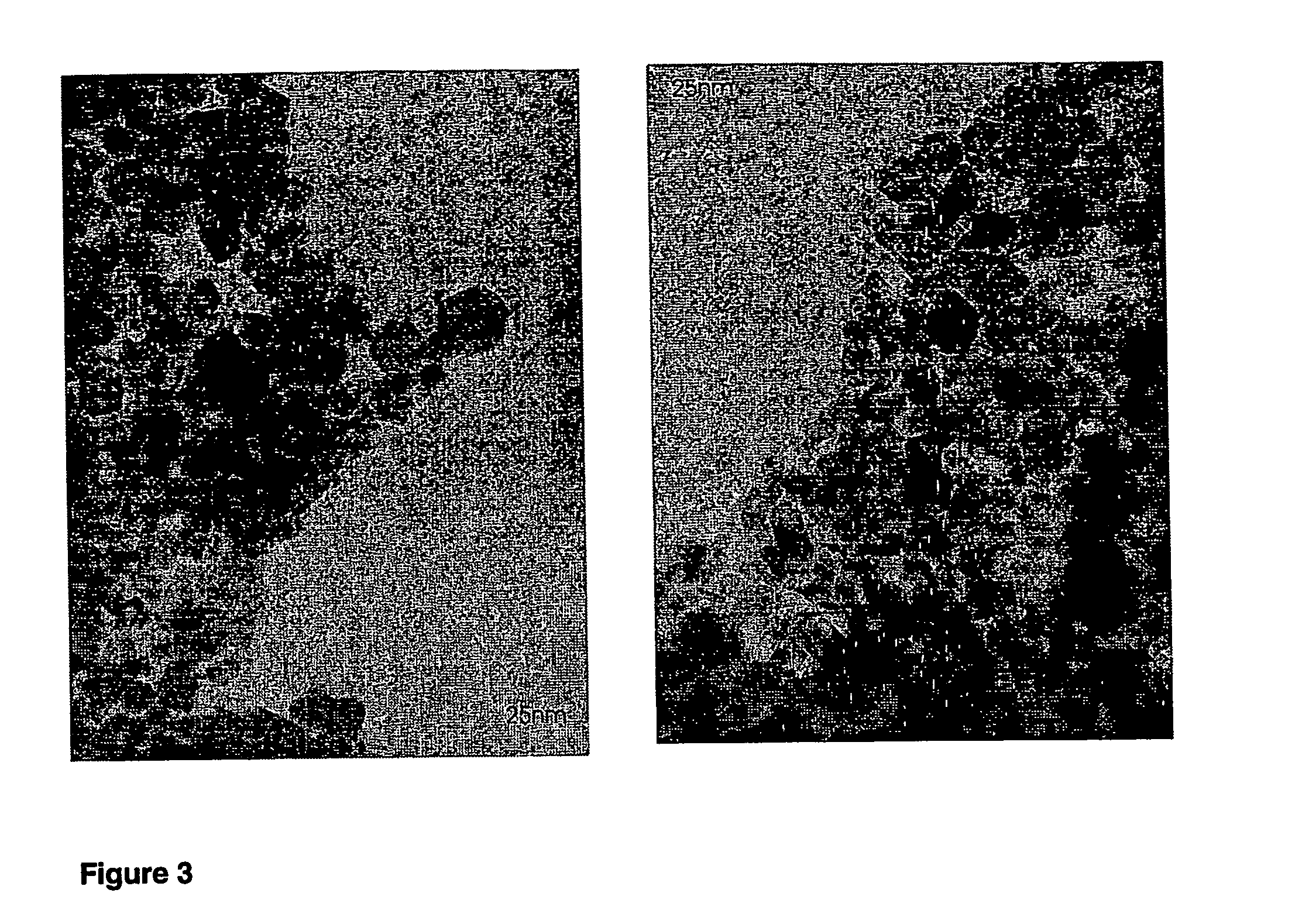Metal delivery system for nanoparticle manufacture
a nanoparticle and metal delivery technology, applied in the direction of alkali metal oxides/hydroxides, catalyst activation/preparation, metal/metal-oxides/metal-hydroxide catalysts, etc., can solve the problems of reducing product purity and performance, low phase stability and/or specific surface area, and energy-intensive mechanical and mechanical/thermal methods. achieve good mixing, high production rate, excellent specific surface area
- Summary
- Abstract
- Description
- Claims
- Application Information
AI Technical Summary
Benefits of technology
Problems solved by technology
Method used
Image
Examples
examples
[0066]General Procedure
[0067]Mixed oxide powders were produced by flame spray pyrolysis in a laboratory scale setup [Mädler et al. (2002A), FIG. 1] or a pilot-scale oil-burner (SYSTHERM, CH-8105 Regensdorf, Typ NS1, Ausführung 1.1, 1988, Nr. 20940; Control unit (Satronic Type ZT801 and MMD 870; Flicker detector (Satronic IRP 1010); Burner tube length: 0.23 m, diameter: 0.0825 m; 720 l of air / hour as dispersion gas, 3 liter of liquid per hour, FIGS. 1 and 2).§ The following describes a standard preparation later denoted as (3 / 3). Metal containing liquids are brought into the flame by a syringe pump (Inotech IR-232) at 3 ml / min. The flame consists of a central spray delivery, a premixed, circular support flame (diameter 6 mm, slit width 150 μm) and a circular sheet gas delivery (ring of sinter metal, inner diameter 11 mm, outer diameter 18 mm, 5 l oxigen / min.). Oxygen (Pan Gas, 99.8%) was used as a dispersion gas in all experiments and delivered at 3 l / min. A mixture of methane (1.5 l...
PUM
| Property | Measurement | Unit |
|---|---|---|
| temperature | aaaaa | aaaaa |
| net heat of combustion | aaaaa | aaaaa |
| particle diameter | aaaaa | aaaaa |
Abstract
Description
Claims
Application Information
 Login to View More
Login to View More - R&D
- Intellectual Property
- Life Sciences
- Materials
- Tech Scout
- Unparalleled Data Quality
- Higher Quality Content
- 60% Fewer Hallucinations
Browse by: Latest US Patents, China's latest patents, Technical Efficacy Thesaurus, Application Domain, Technology Topic, Popular Technical Reports.
© 2025 PatSnap. All rights reserved.Legal|Privacy policy|Modern Slavery Act Transparency Statement|Sitemap|About US| Contact US: help@patsnap.com



